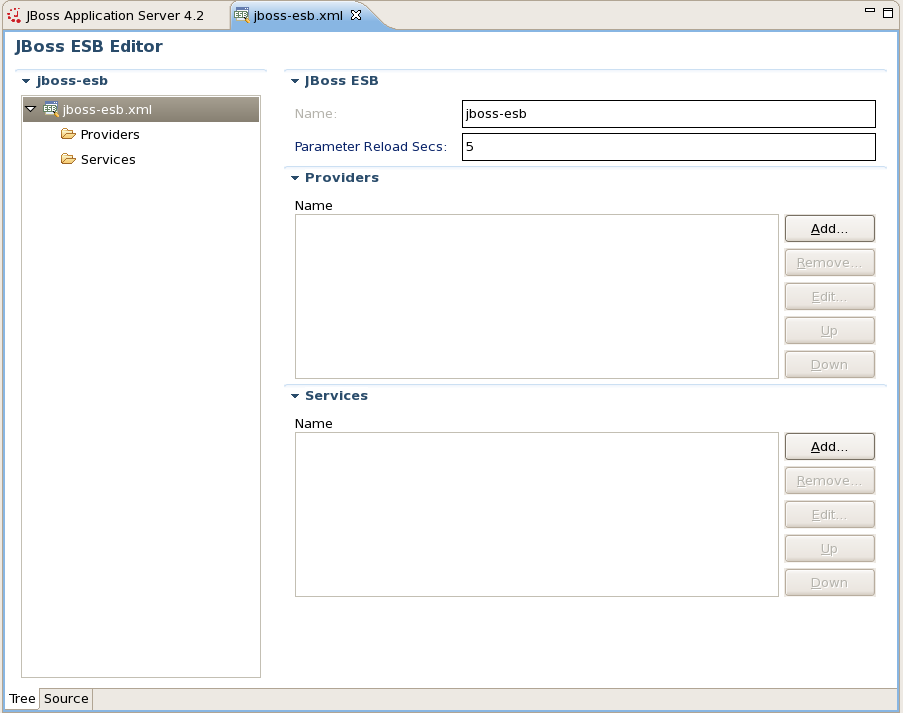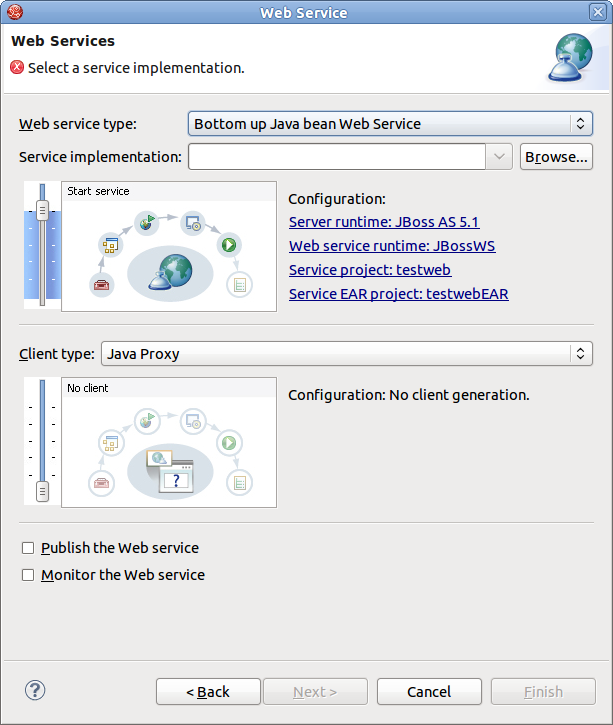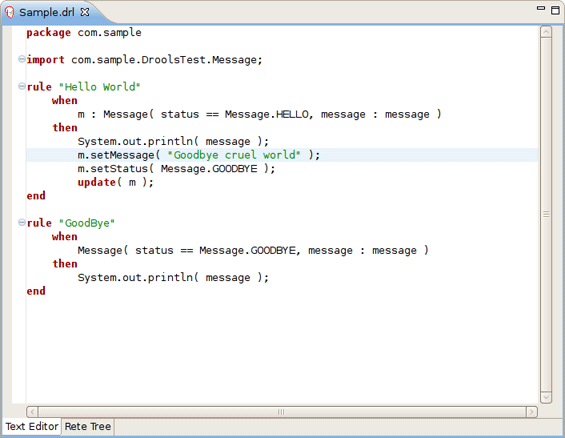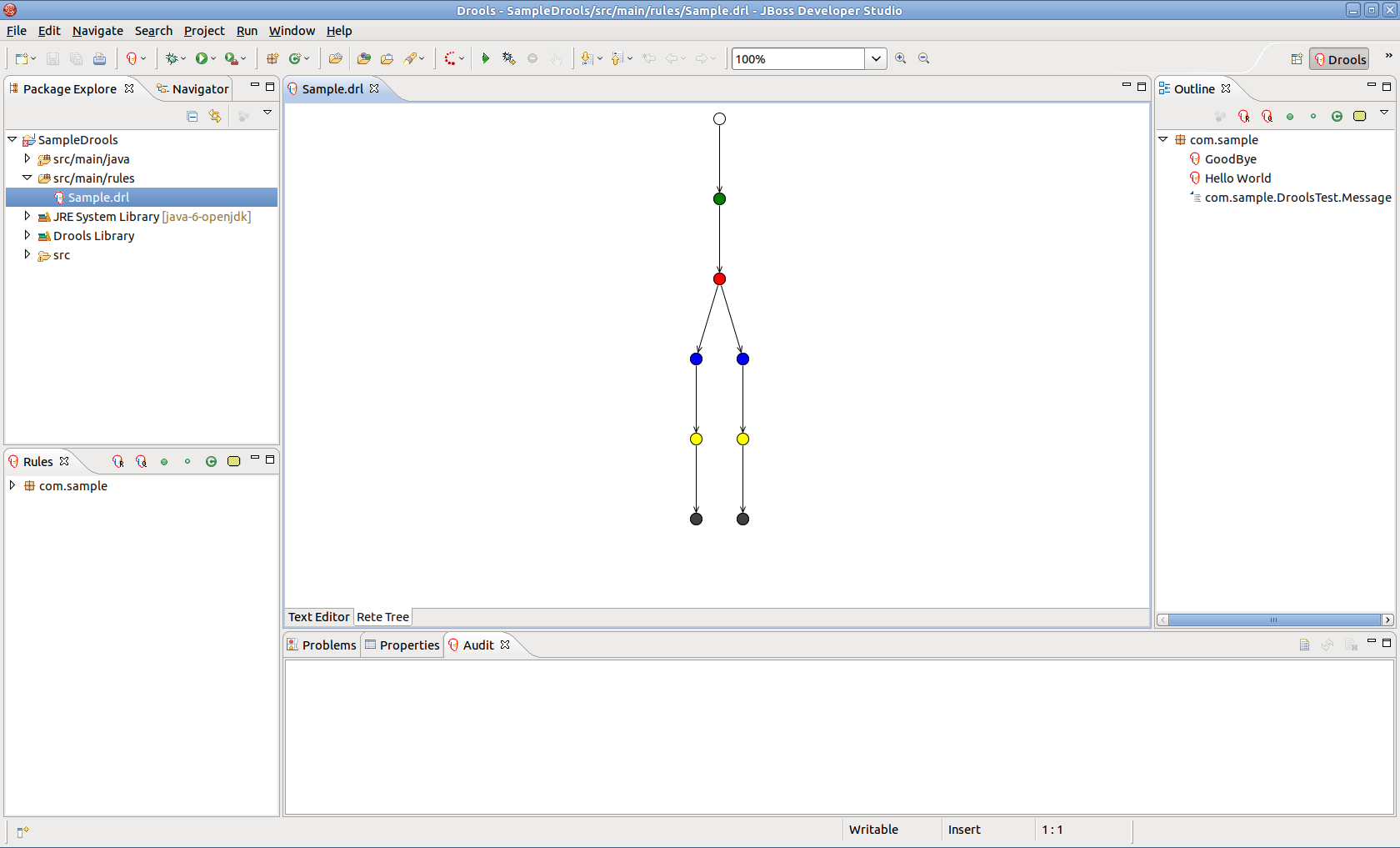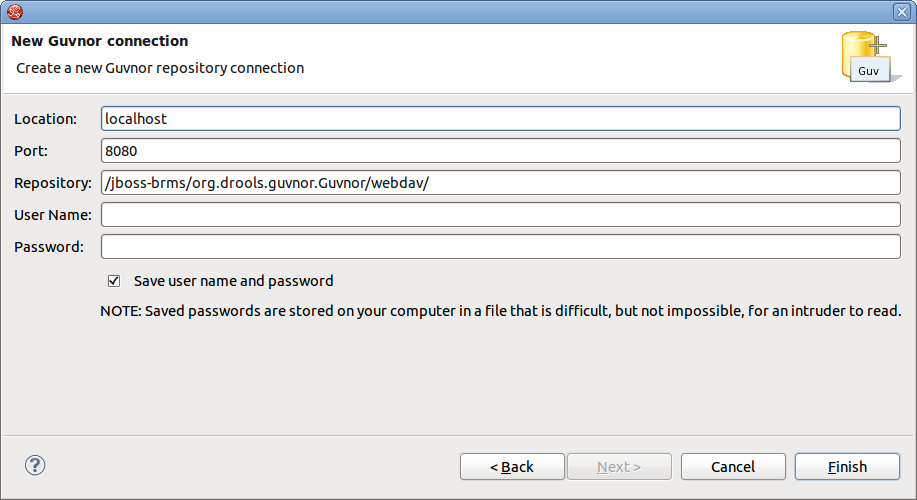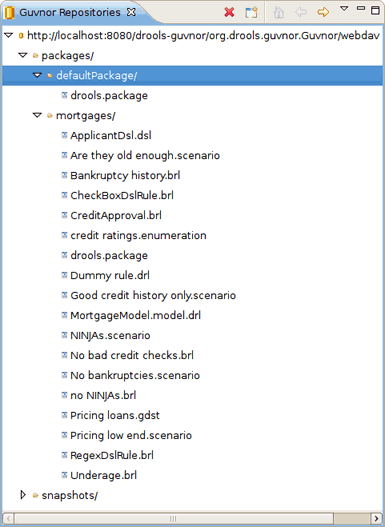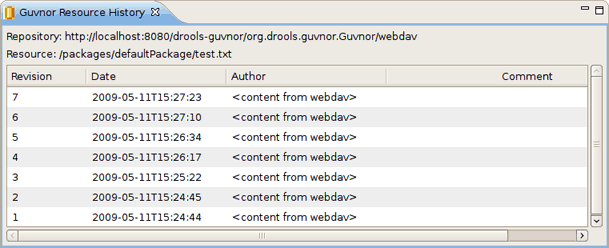This chapter provides details on the Service-Oriented Architecture (SOA) plug-ins that are included in JBoss Developer Studio.
jBPM is a workflow tool providing control over business processes and languages.
jBPM supports the jBPM Process Definition Language (jPDL) and includes a perspective for easy creation and manipulation using the jPDL. Through this view you can add states, transitions and other processes and waypoints in order to create your own business workflow. Refer to the A Minimal Process Definition section of the Creating an Empty Process Definition chapter within the jBPM Tools Reference Guide for more details.
The Enterprise Service Bus (ESB is an abstraction layer that interacts with the messaging system in a Service-Oriented Architecture (SOA).
JBoss Developer Studio includes a tool called the ESB file Editor. Through the use of this tool you can develop an application that will that will take advantage of the features in ESB. Features of the ESB Editor include:
ESB syntax validation
Constant contextual error checking is provided, with error checking on incorrect or incomplete tags also included when using the Source viewer.
XML schema support
By checking the child elements of the providers, the ESB Editor relays incorrect usage combinations to you through error messages upon startup.
ESB XML content assistance
Content Assist enables you to write code fast and with a higher degree of accuracy when using the Source mode.
Synchronized source and visual editing
The ESB Editor gives you the choice of using a graphical view (Tree), a code view (Source), or both when developing your ESB applications. With both instances open at once, the changes made to one are instantly visible in the other, ensuring that you are always working with the most current version of your application.
Refer to the ESB Editor chapter of the ESB Tools Reference Guide for further information.
JBoss ESB integrates component messaging into the JBoss Service-Oriented Architecture, serving as an integral part of the JBoss middleware suite. For information on how to use and configure JBoss ESB with the JBoss Service-Oriented Architecture refer to the Using and Configuring SOA Platform chapter of the ESB Tools Reference Guide.
JBoss Web Services is an integral part of the JBoss Application Server and JBoss Enterprise Application Platform, providing a standard means of working reliably between different software applications.
A Web Service defines a collection of technologies that provide protocols and standards for the exchange of data between applications. You can create a Web Service for your application server through the use of wizards in JBoss Developer Studio. For further details refer to the Creating a Web Service using JBossWS runtime chapter of the JBoss WS User Guide
Web Services Tools also includes the ability to create a Web Service client through the use of a Web Services Description Language (WSDL) document. This can be useful if you already have a predefined service that you wish to recreate, or you wish to use one as a template. Refer to the Creating a Web Service Client from a WSDL Document using JBoss WS chapter of the JBoss WS User Guide for more details.
Drools is a Business Rule Management System (BRMS) that uses an enhanced implementation of the Rete algorithm to provide a forward chaining inference based rules engine (production rule system). Refer to the The Rule Engine chapter of the JBoss Enterprise SOA JBoss Rules Reference Guide for more details.
Drools Tools includes wizards for creating new Drools projects and resources. The resources that can be created include a new rule, domain specific language, decision table and business rule. After these have been created there are numerous editors included to assist you with the rest of the development. Included editors are the Rule editor, the Domain Specific Language editor, the Rule Flow graphical editor and the Guided editor. Refer to the Drools Tools Reference Guide for more details.
Eclipse Guvnor Tools work with Drools Guvnor through rich web based GUIs and editors to provide a centralized repository for a vast quantity of rules. You can store versions of rules, models, functions, processes and other Drools generated components that all relate to executable knowledge bases. Access to the Guvnor is controlled, allowing you to lock down access and restrict features so domain experts (non programmers) can view and edit rules without being exposed to all the features at once.
The tools included for Eclipse Guvnor include:
Guvnor Connection Wizard
The Guvnor Connection Wizard is used to create a connection to a Guvnor repository. This wizard can be started by selecting → → → → , through the Guvnor Repositories View and other locations throughout Eclipse Guvnor Tools. Refer to the Guvnor Connection Wizard section of the Functionality Overview chapter within the Eclipse Guvnor Tools Reference Guide for more details.
The Guvnor Repositories View
The Guvnor Repositories View tool displays the contents of a repository using a tree structure. From within this tool you can create a new Guvnor repository connection, remove a Guvnor repository connection, refresh the tree display and expand or condense the tree layout. Refer to the Guvnor Repositories View section of the Functionality Overview chapter within the Eclipse Guvnor Tools Reference Guide for more details.
Guvnor Resource History View
The Guvnor Resource History View displays the revision history details for files that are both locally stored and within Guvnor repositories. Refer to the Guvnor Resource History View section of the Functionality Overview chapter within the Eclipse Guvnor Tools Reference Guide for more details.
Guvnor Resource Importing Wizard
The Guvnor Resource Importing Wizard assists with copying one or more files from a Guvnor repository to the local workspace (while keeping file association with the Guvnor repository). This wizard can be started by selecting → → → .
Actions for Local Guvnor Resources
A variety of actions can be performed on a file through Eclipse Guvnor Tools. Those actions are:
Update: Replaces the contents of the local file with the updated contents from the Guvnor repository.
Add: Include a local file in a Guvnor repository.
Commit: Update a Guvnor repository file with new content from a locally modified version.
Show History: Displays the revision history of a file.
Compare with Version: Opens a wizard that allows to files to be compared for similarities and differences.
Switch to Version: Provides the ability to replace a local file with an earlier revision of the same file.
Delete: Removes a file from the Guvnor repository and the local copy.
Disconnect: Removes a Guvnor repository association.
